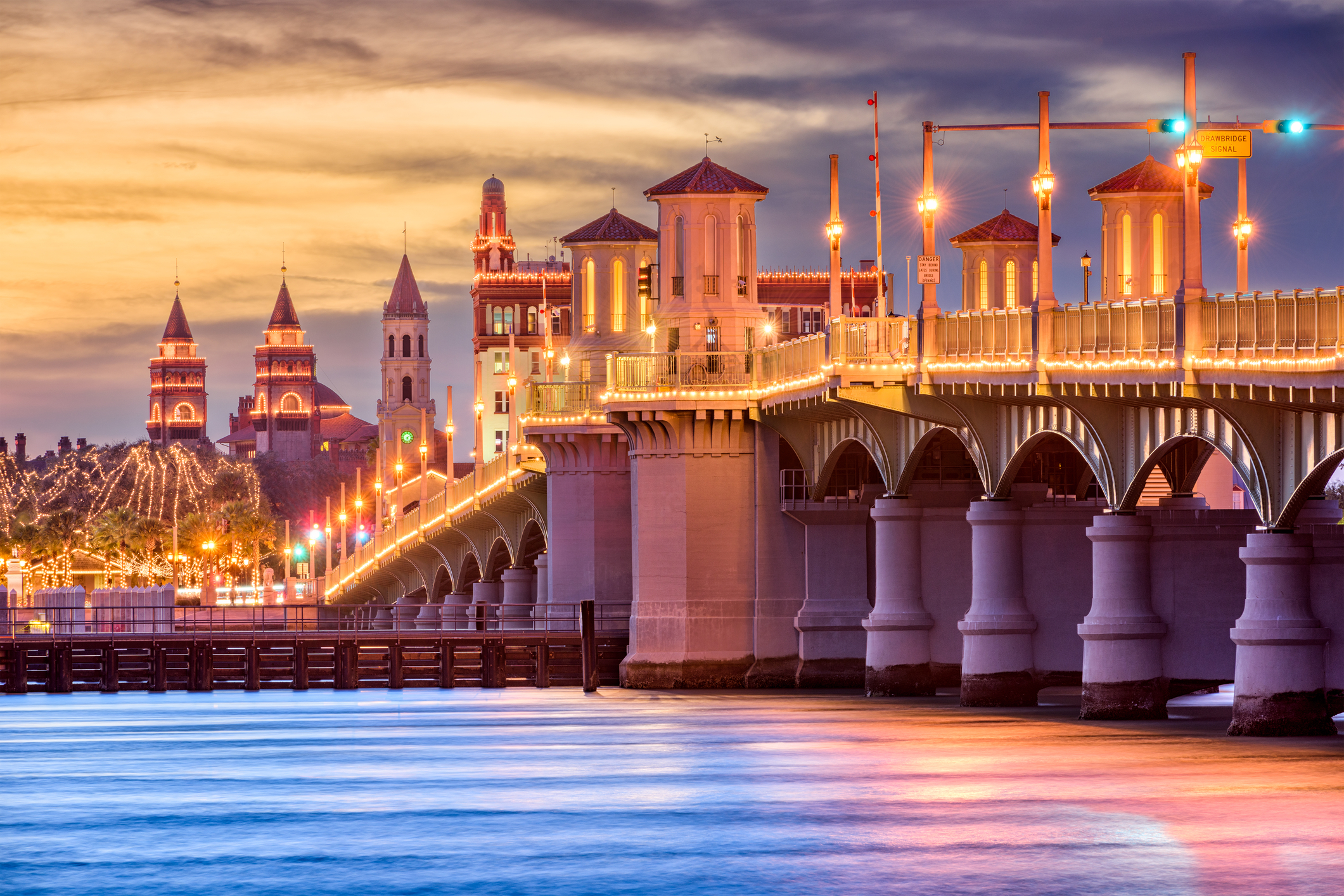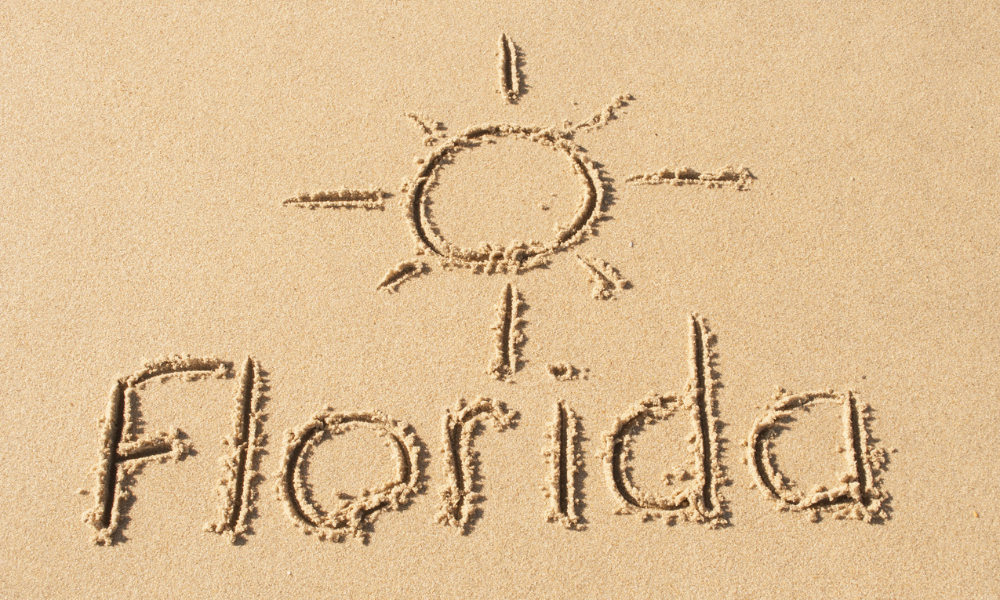Florida may be known for its beaches and warm weather, but there’s more to the Sunshine State than meets the eye. Whether it’s the swamps turned into cities or historic landmarks, Florida’s past and present are full of surprises. Florida’s unique character sets it apart from the oldest city in the U.S. to the pirate invasions of the 1700s. With its incredible biodiversity in its waters and land, there’s always something new to discover, even for those who have lived here for years.
1. Florida is the Flattest State in the U.S.
Even seasoned Floridians may not realize that their state holds the title of the flattest in the nation. Florida’s average elevation is just about 100 feet above sea level, and its highest natural point, Britton Hill, is a mere 345 feet. This flat landscape contributes to Florida’s susceptibility to flooding, especially during hurricane season. However, this flatness also allows for those long, scenic drives along the coast or across the Everglades, showcasing the state’s unique and expansive natural beauty.
2. Florida Used to Be Mostly Swamp
While many think of Florida as a bustling city with crowded beaches, much of the state was once a swampy wilderness. Early developers undertook massive drainage projects in the early 1900s to make the land habitable. The Everglades, which still cover much of southern Florida, are one of the few remnants of this swampy past. These efforts transformed Florida into its growing population hub today, but its swamp origins are still visible in its extensive wetlands and diverse ecosystems.
3. St. Augustine is the Oldest City in the U.S.
 As the oldest continuously inhabited city in the United States, St. Augustine has been a hub of history for more than 450 years. Founded by the Spanish in 1565, the city predates many well-known historical events in U.S. history. Residents of Florida can visit landmarks like the Castillo de San Marcos, a fortress that has withstood centuries of conflict. For history buffs, St. Augustine offers a unique perspective on America’s colonial past.
As the oldest continuously inhabited city in the United States, St. Augustine has been a hub of history for more than 450 years. Founded by the Spanish in 1565, the city predates many well-known historical events in U.S. history. Residents of Florida can visit landmarks like the Castillo de San Marcos, a fortress that has withstood centuries of conflict. For history buffs, St. Augustine offers a unique perspective on America’s colonial past.
4. Florida Has the Longest Coastline in the Contiguous U.S.
Florida’s nearly 1,350 miles of coastline give it the longest stretch of beach in the contiguous U.S. This means plenty of opportunities for residents to enjoy the state’s famous beaches, from the Atlantic to the Gulf of Mexico. But it’s not just about sunbathing. Florida’s diverse coastal environments include mangroves, barrier islands, and coral reefs, essential to the state’s ecosystem. Fishing, boating, and exploring these coastal areas are favorite pastimes for many Floridians.
5. Year-Round Harvests Thanks to Florida’s Climate
Floridians are lucky to live in one of the few states to grow crops year-round. The state’s subtropical climate is perfect for agriculture, making Florida a leader in orange production. In fact, over 70% of the U.S. supply of oranges comes from Florida. But the state also leads in other crops like sugarcane, tomatoes, and strawberries. For residents, this means access to fresh, locally grown produce throughout the year, adding to Florida’s appeal.
6. Alligators and Florida Go Hand-in-Hand
With more than 1.25 million alligators roaming the state, it’s not unusual to spot one in Florida. These prehistoric creatures are most active in freshwater environments and are often a source of both fascination and fear for Floridians. However, they are a protected species, and interactions with humans are rare, thanks to strict state regulations. Nonetheless, every Floridian knows the importance of staying cautious around lakes and rivers, especially during mating season.
7. The Florida Keys Have One of the Largest Coral Reefs in the World
The Florida Keys are famous for their tropical appeal, but did you know they are home to the third-largest coral barrier reef in the world? The Florida Reef stretches for over 350 miles, making it a prime destination for diving and snorkeling enthusiasts. However, like many reefs worldwide, it faces climate change and pollution threats. Efforts are ongoing to preserve this natural wonder, a beloved attraction for locals and tourists alike.
8. Florida Experiences More Lightning Strikes Than Any Other U.S. State
Tampa is often called the “Lightning Capital of North America,” and for good reason. The state experiences more lightning strikes annually than any other in the U.S., particularly during the summer months. Floridians are used to quick, intense thunderstorms that roll in during the afternoon, providing temporary relief from the heat. However, the state’s high lightning activity also poses risks, making Florida a center for lightning research.
9. Florida Was a Pirate’s Playground in the 1700s
Pirate lore is not just a thing of the movies in Florida. During the 1700s, pirates who plunder ships passing through the Caribbean and the Gulf of Mexico frequently visited the state’s coastline. Cities like St. Augustine and the Florida Keys have strong ties to this swashbuckling history, and pirate festivals and museums are still popular today. The state’s pirate past remains a fascinating chapter in Florida’s history that continues to attract interest from residents and visitors alike.
10. Florida’s Role in Space Exploration
Cape Canaveral is known worldwide as the launch site for NASA’s space missions. Floridians take pride in the state’s role in space exploration, especially with the Kennedy Space Center attracting millions of visitors annually. Florida has been the starting point for countless historic missions, including the Apollo 11 moon landing in 1969. Even today, it remains a hub of aerospace activity, with private and government-funded missions continuing to use the state’s iconic launch sites.
While Floridians may be familiar with the beaches, theme parks, and sunny skies, the state is full of hidden gems and historical wonders that make it truly unique. From the swamps that were transformed into cities to its pivotal role in space exploration, Florida has a rich past and an exciting present. Whether exploring the Everglades or diving into the history of pirate invasions, there’s always something new to learn and experience in this diverse and dynamic state.



You must be logged in to post a comment.